Working toward legislation to curb light pollution in Illinois.
| Working toward legislation to curb light pollution in Illinois. |
||
|
Just as our cities, suburbs & towns have paved over our prairies and woodlands, stray light from the poorly designed, irresponsibly operated fixtures which we've filled our world with has, in effect, paved over our nighttime sky. It has, in a short span of years, gone from being a source of inspirational wonder to being a nearly blank, dully glowing shell.
Amateur stargazers face the same problems; unfortunately for them, retreat to distant, sparsely populated areas is usually not practical. Why should this matter to anyone else? Educators, politicians, sociologists and citizens are expressing concern at how young people in our nation show little interest in the sciences and mathematics, and how test scores have fallen in those fields. But science and math are the tools for studying nature, and why should we expect young people to be interested in nature, if they never get to experience it? For centuries, the dark, star-filled night sky has inspired not only countless poets and philosophers, but also many young people who went on to become students of astronomy, cosmology, physics, and other sciences. Our general citizenry is also losing its exposure to nature. Parks and preserves can save samples of the natural world for us to visit (and many people do), but light pollution does not respect park boundaries; once stray light spews into the sky, it draws a curtain for everyone for many, many miles around.
But light pollution is somewhat different than some other forms of pollution. While toxins in the air, water or soil may take decades to get rid of, even if they are no longer being created, light can go away with the flick of a switch. Our group is not suggesting that we just turn off all outdoor lights (which could turn the artificial sky brightness map black tonight, as illustrated in the photos below), we are saying that it is possible to reverse the growing problem of stray light by replacing irresponsible fixtures and practices with responsible ones. From our setting and practicing standards for better outdoor lighting, our children and theirs could very realistically enjoy seeing starry skies which we have tragically, accidentally lost. 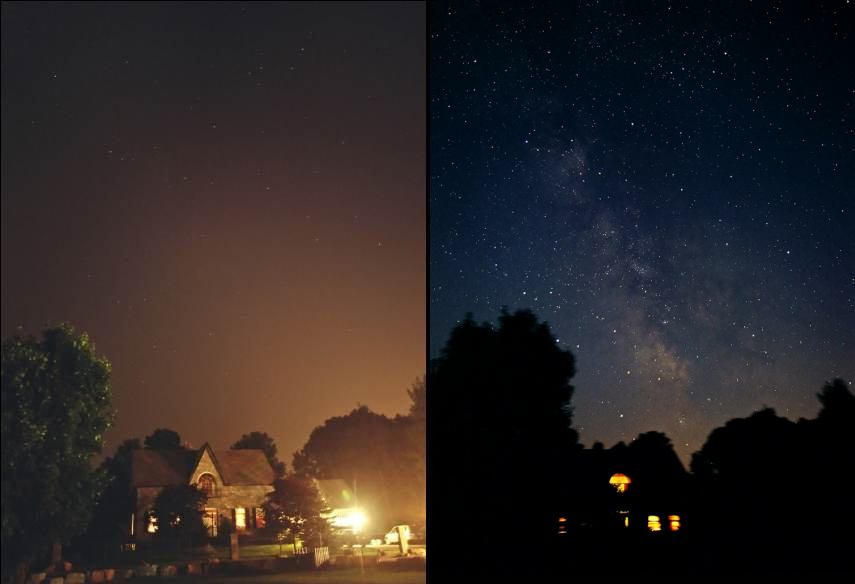
In the photo on the left, we see how the sky from Todd Carlson's home in Goodwood, Ontario looks on a normal night, glowing with stray light from the typical mammade lighting found throughout most modern populated areas. On the right, Todd captured what the sky looked like from the same spot during a widespread power outage on August 14th, 2003: The sky of the past reappeared, complete with thousands of stars, and a glowing Milky Way.
|
Return to Page Top |
|||
light pollution Illinois Chicago Cook County DuPage County Will County Springfield energy enviromnent global warming anti light pollution legislation lighting ordinances |
|||

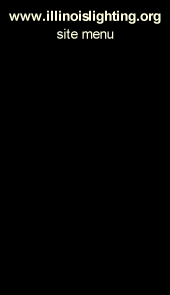
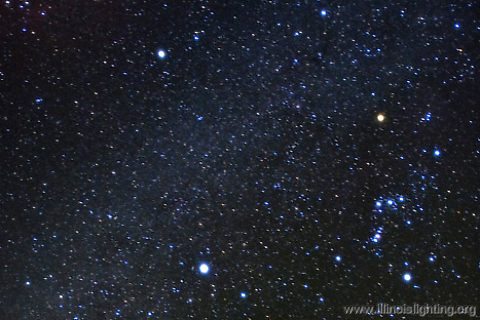
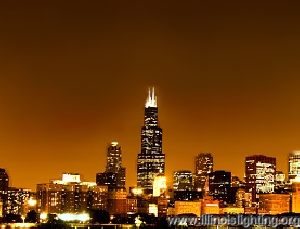 Professional astronomers have fled from Illinois and other heavily populated areas; even their retreats to observatories built on mountains and in deserts are not completely effective at getting them away from stray manmade light, which they refer to as "
Professional astronomers have fled from Illinois and other heavily populated areas; even their retreats to observatories built on mountains and in deserts are not completely effective at getting them away from stray manmade light, which they refer to as "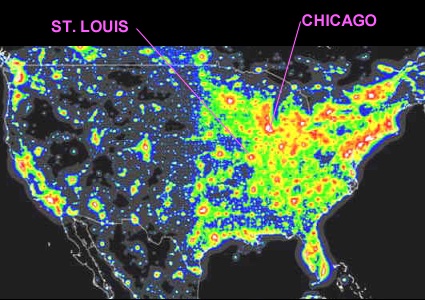 This 1995 map of the continental U.S. from
This 1995 map of the continental U.S. from